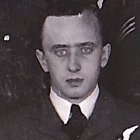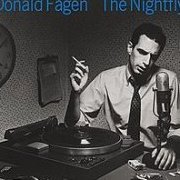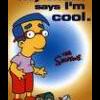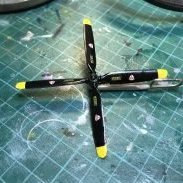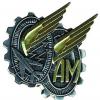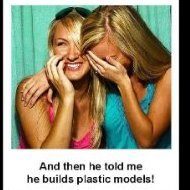Search the Community
Showing results for tags 'Academy'.
-
Hobby 2000 rebox from the Academy 1/72nd Boeing B-29 Superfortress kit. - ref. 72069 - Boeing B-29 Washington B.1 - Limited Edition Sources: https://hobby2000.pl/index.php?id_product=94395&rewrite=p94395-hobby-2000-72069-washington-b1&controller=product&id_lang=2 https://ksmodel.pl/sklep/szczegoly/hobby-2000-72069-washington-b-1-limited-edition-1-72-27516/ https://www.facebook.com/commerce/products/h2k72069-washington-b1---academy-+-cartograf-+-maski/6254762827937321?ref=mini_shop_items_for_you&referral_code=newsfeed_carousel_ad - ref. 72070 - Boeing B-29 Superfortress - Limited Edition Sources: https://hobby2000.pl/index.php?id_product=94396&rewrite=p94396-hobby-2000-72070-b-29-superfortress&controller=product&id_lang=2 https://ksmodel.pl/sklep/szczegoly/hobby-2000-72070-b-29-superfortress-limited-edition-1-72-27517/ https://www.facebook.com/commerce/products/h2k72070---b-29-superfortress---academy-+-cartograf-+-maski/6432480750131509?ref=mini_shop_items_for_you&referral_code=newsfeed_carousel_ad V.P.
- 12 replies
-
- 8
-

-
- B-29
- Superfortress
-
(and 1 more)
Tagged with:
-
This is my build of Academy's T-34/85 with bedspring armor. Painted with Tamiya lacquers, and weathered with oil paints and pigments.
-
Hobby 2000 from Poland (link) is to rebox the 1/72nd Consolidated PBY-5A Catalina kit from Academy. - ref. 72065 - Consolidated PBY-5A Catalina - European Theater of Operations (ETO) https://ksmodel.pl/sklep/szczegoly/hobby-2000-72065-consolidated-pby-5a-catalina-eto-limited-edition-1-72-27460/ - ref. 72066 - Consolidated PBY-5A Catalina - Pacific Theater of Operations (PTO) https://ksmodel.pl/sklep/szczegoly/hobby-2000-72066-consolidated-pby-5a-catalina-pto-limited-edition-1-72-27461/ V.P.
-
I have been looking forward to making this for a little while now. I wish I could make this into an UK Apache but there doesn't seem to be any decals, I suppose I could scour my leftovers and add an union jack or something. 🤓
-
My Hurricane is entering a painting and decalling phase and I want to take my time letting each step cure because I am using Vallejo acrylics. So I'm considering my next project... inspired by @Brigbeale's restorations, and @rob Lyttle's Lockheed Ventura/Lodestar masterpieces. Gentlemen, any tips, tricks, and input most welcome. I will also be reviewing builds from @Ed Russell and some articles. Tony O'T was the king of the venturas. I now have four 1/72 minicraft Venturas that I have picked up second hand. This one is a partly-built 1/72 minicraft Ventura I got at a show for $5. The vendor tried to sell me on the fact that a "museum-quality" modeller had done most of the work for me but I told him I was going to take it apart anyway. The paint and seams look good but I want a 1942-era Ventura, freshly built, wearing TLS cammo, and turretless and gunless, snatched away from RAF delivery for the purpose of RCAF training at 34 OTU Pennfield. So this fellow needs to come apart and come clean! I want to make this one into the Ventura coded FY-F AE728 crash that my great uncle experienced while training (described elsewhere on BM). I'll remove the turret and cover the turret and astrodome holes, collapse starboard landing gear, open the escape hatch in the cockpit roof, and open the passenger door on the port side. . In the pic below some more issues... two identical pilot seats? Each with an ejector pin seat cushion? And a giant full bulkhead with a space-age circle in the middle? Nope nope nope. My Ventura needs less than half a bulkhead behind the pilot only, and only one seat. And a better seat. And seatbelts! Behind that would be the radio op position. I'll add that too. I've read crash reports and it's interesting to read the radio op witness statements. They sometimes have no clue about what's going on because they are tied up in the wireless training exercises. I'll need to do something about the nose. I need the windowed version. For some bizarre reason all four of my minicrafts are the USA version of the plane. Same with other ones I've seen in stores. All the RAF versions are being sold cheap down in America where shipping would cost me as much as all four kits together. Drives me crazy but there it is. I may try sawing off the noses and vacuforming new ones in clear. Unless there is a source of noses somewhere? Ah but shipping! I dunno. Does minicraft sell replacement noses I wonder? (for their alternative RAF / B34 Lexington versions) I sent Academy an email. We'll see what happens! Bomb bay is buttoned up. That's fine but it'll come apart anyway probably. In the background you see the tailplane pieces. I would like to cut out the rudders and elevators. I probably need to check on @rob Lyttle's work. Finally, what's this? Some creepy psychopath modeller trophy? No, it's phase 1. Soaking the pieces in water. Then I'll drain them and freeze them for a few days. If CA was used to glue them, supposedly this should help expand and break the bonds. Phase 2 will be handing the pieces over to my wife. She soaks 3d prints in IPA at work and she's due to replace the liquid soon. She'll toss the pieces into the stuff for a week maybe before sending the liquid on to be properly disposed of. I'll clean the stuff off at that point and see what's what. So why start with this one instead of the pristine ones? Something to learn on and just try everything without worrying about it. When my wife bought me the Revell Ventura last xmas (first kit in 40 years) I got so tensed up with perfectionism it really surprised me. Having extra copies helps! This one will proceed slowly as I need to see how well I can break apart and clean his thing first.
- 556 replies
-
- 16
-

-
- Ventura
- Restoration
-
(and 1 more)
Tagged with:
-
There should be a modeller's confessional booth: "... it's been over 40 years since I built a Wildcat". To be exact, the only previous kit I built was the ancient Airfix FM-2/Wildcat VI. I put the blame on the lack of good kits. Until recently, the only kits I had in the stash were 2 of these, and a Hasegawa F4F-3, although the plastic is for an F4F-4, requiring work to obscure the wing fold, etc. Then there was the fact that this kit is derived from the old Frog kit, which made me reluctant to build it. Once the new kits from Airfix and Arma Hobby started to come on-stream, I sold one of these kits, but kept the other "just in case". Here are the contents. The artwork shows the Wildcat landing on a fleet carrier, surely incorrect for an anti-submarine patrol version, which would have operated from escort carriers. Be that as it may, the kit clearly does represent an F4F-4: double-banked 14 cylinder engine, folding wings, 6 guns, forward swept radio mast. Then there's the Frog angle. I've never seen the Frog kit, but it instruction are readily available, and this kit has the exact same parts breakdown, including the two-piece main wheels and distinctive Frog display stand. However, the level of recessed detail looks well beyond what Frog was doing in the early 1970s. This is clearly evident on the wings:
- 8 replies
-
- 4
-

-
- Wildcat F4F-4
- 1:72
-
(and 1 more)
Tagged with:
-
Hi all. here is my last work . The famous " Marge " P38-J from Richard Bong. I choose to build an operational plane, instead of the real plane of the museum. i had this kit in my stash with the peddinghaus decals , before Tamiya released his P-38J; so i've decided to buy the Tamiya for another purpose... I've been using some decals from Tamiya, Peddinghaus and the generic set of Eduard stencils for P-38. Each of decals were excellent quality. A big Ed to improve the kit, full riveting. A lot of work to get a good fit and here is the result. i'm pretty happy of her : and just for fun : the fork tail devil...
- 10 replies
-
- 42
-

-

-
Answer Plastic Kits is to release 1/48th Korea Aerospace Industries (KAI) FA-50/TA-50 Fighting Eagle/Golden Eagle kits. Release is expected in the Summer 2023. This kit will be based on the Academy's KAI T-50 Golden Eagle original kit with new injected plastic parts (no resin). Source: https://www.facebook.com/Answerkits/posts/pfbid037MHsRTQnB1XfmHg65qQWkb1CAifqTK2hSbQb5dxDmRb3jzFQ2ALCrVb9TWTXBXoil - ref. AA48021 - KAI FA-50 Fighting Eagle - Polish AF & RoKAF - ref. AA48022 - KAI T-50 Golden Eagle - Indonesia, Philippines and Thailand AF V.P.
- 6 replies
-
- 4
-

-

-
- FA-50
- Answer Plastic Kits
-
(and 1 more)
Tagged with:
-
Hi folk's just time for one more in the form of a little £5 E-bay buy,the kits OK for it's age and should pose no issues.
-
I model aircraft, but I've been thinking a truck of some sort to complement some of my 1/72 Gustavs could be nice (see my Minor Gustavs project) . This GB seems like the opportunity! I have this kit to use with both a fuel truck and a Schwimmwagen (not sure how that translates...)... and what's that little cart thing next to them? Probably a loader of some sort, I would think... Maybe I have a transport, a loader, and a carrier all in one box here!
-
Hi All, please see pics of my finished F/A-18C of VFA-113 'Stingers'. The Academy kit is nice, Superscale decals a pain to work with, and the aftermarket resin radar, wheels, wheel bays, jet nozzles and cockpit added a lot. The wings were folded and flying surfaces positioned 'the old fashioned way'! All in all pleased with how it looks. It will be part of a hangar deck diorama which you can follow here.
-
Hi all, That is my latest build, an Academy OV-10A Bronco. I always liked the Bronco very much, probably because of it is a twin boom, twin engine aircraft at a time when jet fighters ruled. Il also like its low nose, high tail aggressive stance, just like a cat preparing to pounce on it's prey (well I know it's a poney!!) The Academy Bronco is nothing but a partly engraved copy of the very old Hasegawa OV-10 model that dates back to 1968-69. Very old, undetailed, providing the ugliest 1/72nd scale wheels in the industry (along the Matchbox Twin Otter wheels) - just like shirt buttons, not more. That is the second time one of my models started around wheels. I really had a problem with theses wheels and I decided to give it a go as soon as I knew about the Reskit Bronco wheels release... First time I started with wheels was my Italeri A-26K Counter Invader - using True Details KC-135 Wheels. Here are some shots of the finished model : A few words describing the building process and main corrections : * use of Reskit wheels * CMK Cockpit et engine parts (engine fairing fronts/intakes and open engines) * Quickboost propellers * 150 gallons Aero 1C fuel tanks : kit external fuel tank is not the correct shape and size. My 150 gallons tank was stolen from a Hasegawa F9F-6 Cougar kit. * Landing gears : Front landing gear > original wheel was cut and fork was carved to receive Reskit front wheel. Main gears > were detailed - 50% using kit parts, 50% scratched using Monogram F-4 landing gear jacks and plastic bits + brake lines. * Decals are the excellent AOA decals. Great design, great print and film, great information booklet that was even used as Bronco documention (radio gear, weapons..) - I choosed #8 aircraft (RA-8) from VS-41 Shamrock squadron as seen at NAS North Island in 1969. * Engraving additionnal panel lines, adding a few structure details from plastic card for raised skin details, cargo hold hinges and handle, antennaes, position lights, mid cockpit body frame, inner and outer cockpit windows handles, additionnel cockpit details... * Photoetched parts (cockpit details, windshield wiper... * Brass pitot tube * Adding folding ladder fairing front right lower fuselage - Removing all four step spring doors on the aircraft front left fuselage and adding a fifth step on the right. Broncos cockpit access was assymetrical from the right only although windows opened symetrically on both sides. A few additionnal pictures Modeller Karma : just came to learn, a few days before completion of this model ICM is to release modern 1/72nd scale Bronco kits later this year. Next, sunlight photographs Eric B.
- 17 replies
-
- 72
-

-

-
I'm a little late to the party, me old seadogs, but I've been given the green light to put this one on. It's my current recreational build - I just started fiddling with some of the bits of what looked like an interesting and well presented kit. I remember thinking previously that it'd be a nice candidate for this very GB.....and carried on with this and that. Well, recently I had a spell of enthusiastic modelling on the little guy, and before I knew it the fuselage was joined and the lower wings were on! It was only then that I remembered the Salty Dogs.... What I've done has all been in March though, so I'm kindly flagged in for the duration 😎 I'll organise a few pictures to get the thread up to speed, and take it from there Cheers all, and thanks
-
Joining you with this kit. Bought at IPMS Gloucester show in 2018 - prob to pose as an airfield prop. And that cheap price-tag would have helped the decision making. Parts, still sealed in bags. Offering these options. One is Vietnam in drab, the other Baghdad in Desert. I'll probably go for something anonymous that could be used at any airbase.
-
Here is a just finished 1/72 Academy F-35B – far from perfect, but at least close enough to what I wanted to depict. To represent it in landing configuration, the Academy kit offers some advantages. Compared to Italeri, it allows the flaps and elevators to be lowered and comes with non-weighed tyres. Compared to Hasegawa, it lets you leave the inner weapons bay doors partially open - as see e.g. on the Academy kit box top. The shock absorbers of the landing gear were extended using bits of stripped electrical wire, with the torque arms from the Eduard photoetch set easily “unfolded” to match. As for colors, AK RC245 was used for the stealth grey and left unvarnished to avoid losing its metallic shine, and Tamiya XF-20 for the nose and other grey/beige areas. The canopy was tinted (inside and out) with a mixture of Gunze 80% smoke H95 + 20% orange H92. The carrier deck base comes from Uschi, with its yellow line retouched (not very cleanly I’m afraid) to make it look less orange. I had also considered a Steel Scorpion base because it came with an interesting surface texture, however the yellow and white markings didn’t quite match the real thing. Now for some pictures…
-
Academy is to release a new tool 1/48th North American F-51D Mustang - Korean War - ref. 12354 Source: https://www.britmodeller.com/forums/index.php?/topic/235117457-academy-2023-releases-newsletters-1/&do=findComment&comment=4622755 Top prize Creativity & Originality for this type choice... V.P.
-
With the P-51D done and on the shelf, and the He-280 back on the table I scanned the stash and decided a chopper is due. Picked out this one and will try to go for the White JDF Bird. This should be an easy build with a challenging paint job. Stay tuned. Ran
-
Hello Another finished build with this 1/72 Finnish Curtiss P-40M which actually was some sort of a gift from the Soviet enemy in 1943. The decals came from the old V7269 Ventura decal sheet. At the moment I am clearing my huge "in progress" boxes as this one was started many years ago. Patrick
-
Hello again. For this build thread, I've chosen the short-lived Republic P-47B "Double Twister", which as far as we know, only flew in this configuration one time, and of which only one photo was supposedly ever taken. In fact, most people at Republic didn't even remember the aircraft, but the pilot did, almost killing himself because he forgot to set the trim on the rudder, to allow for the offset of the vertical stabilizer. For those newer to modeling out there, let me explain. On single engine propeller-driven aircraft, the vertical stabilizer was usually offset, from 1 - 3 degrees, to counteract the torgue of the rotating propeller. This is still done today, on R/C aircraft -- not sure about real life. A few decades back, the super-detailing crowd was fussing with kit manufacturers about not having this feature built into the kits (seriously complicating the molding process, by the way), and made a big hullabaloo when some manufacturer actually did it, as a selling feature. I guess the kit had other issues, or didn't sell that well, because the whole mess finally just went away. I can't even remember what kit or kits this involved, but I guess most manufacturers said "if you want it, YOU make it"; and many of us did, as was the fashion in those days -- when somebody did something, everybody else was expected to follow suit, whether it was Rub-'N-Buff Paste wax or Floquil Old Silver for natural metal finishes, to later using heat-stretched Bic Ball Point pen filler tubes (emptied and cleaned out), and stretched into tiny gun tubes. I don't think that any of those products exist today, but back IN THE DAY, you just had to do it! Nowadays, it would be black-basing or hairspray technique or the like. Time marches on... But, I digress. Here is the said only picture of the said aircraft: Not shown well in the photo, are the twin contra-rotating props, and while they worked, the gearbox was fiddly, and the speed increase, I believe, was only 1 mph better than a regular P-47B, so it just wasn't worth the effort to alter P-47 production at the time. Also, you will note the odd color of the aircraft. The actual color is unknown, but many claim it is just plain old yellow zinc chromate primer, which sort of makes sense, in a certain way. Why waste the paint job if the plane crashes?. On the other hand, the obvious gloss on the paint is not what you would expect from the primer, and if you're going to the expense of clear-coating the primer, why not just paint the thing O.D. like all the rest? Maybe it's just oil smeared here and there, but I think it only had one flight, so - go figure. I have massaged the photo in Photoshop every which way I can think of, and still can't come to a conclusion. Since all of the Republic records were destroyed when Republic sold out, we will probably never know. However, I welcome any comments, informed or opinion on the matter, before I get to that stage. Otherwise, I will probably paint it yellow zinc chromate, just because its different... To do the dirty deed, I will fall back on my sawing and hacking favorite P-47 Razorback kit, the 1/72 Academy kit, mostly because it's cheaper than the Tamiya, which is considered a better kit. I'll save that one to build a real "D" model some day -- I hope!: On the bottom row, from the left, a resin copy of six propeller blades I got from some resin kit or the other, wherein I decided to build the 4-bladed version vs the contra-prop version, probably the Alliance XP-72 kit, but I'm not sure. Anyway it would not be that hard to take a larger prop spinner, perhaps from a P-40 and fill and sand it to shape and scrounge prop blades from the spares box. In the middle, somebody's P-47 cockpit set from the spares box, and a set of P-47 razorback masks, mostly because I happen to have them on hand. I also have a Rob Taurus canopy, which I will probably not use, but we'll see. As with my XP-47 Prototype build HERE I will begin by marking off the scale 8 inches of length that have to be removed from the front of the fuselage, below, where "A" is the scale 8 inch wide strip of tape I used and "B" is simply one of the pencil lines drawn: Above right, the tape-cutting device I used allowed me to cut a piece of tape 3 times the 0.8mm width, or a total of 2.4mm in real life. This, taken along with the width of the saw kerf, will get us right at 8 scale inches. Above left, the arrows point to the marked lines, which have also been scribed, to help align the saw when I make those cuts. However, I like to start by sawing through the wing root vertically, up through the marked lines, to leave as much of the wing root structure as possible, allowing for less work and filling later. Above right, the other lines are sawn through, separating the fuselage into two parts, and showing the removed plastic. I will continue with the butchery, when I return, anon... Ed
-
Hi All, Diving head first into my first large scale model. In this case, it Academy's lovely 1/35th scale AH-1Z Viper attack helicopter. I love the AH-1 series of helicopters, and really dig this particular variant (as well as the OG Vietnam War era AH-1G). I've picked up just about everything made for this model, so let's see if I can make it work. The box art; The aftermarket goodies; First thing to accomplish, and the most involved aspect as far as integrating an aftermarket set was preparing the forward fuselage for the Legend Productions AH-1Z avionics and ammunition bays. I drilled holes around the perimeter of the molded in bay access doors, then used a craft saw to removed the doors. Various sanding sticks and files were used to removed the remnants of the doors up to the door panel lines and clean up the opening. Here's the bays loosely fitted into place. I will permanently glue them into place once the bays are painted and the forward fuselage is assembled. Thanks to @Greg W for helping me get these fitted into place. His knowledge on how to tackle installing resin sets of this type was greatly appreciated. Here's the tail boom with some photoetch screens and Flying Leathernecks FMV antenna fairing fitted in place; Thanks for looking!
-
Junkers Ju.87D-3 Stuka Experten (SH72470) 1:72 Special Hobby The Ju-87 Stuka was conceived as a dive bomber in the early 1930s and proved itself a capable performer during the Spanish Civil war, then later during the Blitzkrieg in Western Europe. However, the Battle of Britain showed that the relatively slow speed of the aircraft rendered it vulnerable to more modern fighters of that time, such as the Spitfire and Hurricane fielded by the British. As such it was redeployed to combat arenas where the Luftwaffe held aerial superiority or where there was unlikely to be any airborne opposition at all. Axis aligned countries were also supplied with surplus German Aircraft, usually those that had since been superseded by new variants. The -D series featured two coolant radiators underneath the inboard wings panels, while the oil cooler was relocated to the position formerly occupied by the single, chin-mounted coolant radiator. The -D series also introduced an aerodynamically smoothed cockpit with better visibility for the pilot and overall space for the crew to move around in combat. Armour protection was also strengthened and a new twin-mount 7.92 mm MG 81Z zwilling machine gun with a high rate of fire was installed to improve the rate of fire they could direct at their opponents. Engine performance was increased with the installation of the improved Jumo 211J that now delivering around 1,400 hp, which enabled the weapons load to increase from a relatively ineffectual 500 kg to 1,800 kg, although a typical bomb load was more likely to be 500-1,200 Kg. The D-3 was intended for ground attack and was armed with forward firing machine guns as well as the afore mentioned bomb load and crew protection. The Stuka’s ground attack credentials were further improved by the replacement -G variant, which added hard-points for underslung cannons in panniers under the wings. The Kit This a reboxing of the Academy kit, with additional parts that were tooled by Special Hobby themselves. The kit arrives in a top-opening box with the usual yellow/white theme and an attractive painting of the subject matter on the front. Inside are six sprues in two shades of grey styrene, a clear sprue, a sheet of Photo-Etch (PE), a small bag containing three 3D printed parts in orange resin, the instruction booklet with colour profiles on the rear pages, and a decal sheet in a separate bag. Detail of the Academy parts is good, and they are matched in every way but the colour by the new sprue from Special Hobby’s designers. The addition of the new parts, resin and PE are a good boost to the base kit, and the decals are printed by Eduard, so the carrier film can be removed after application. Construction begins with the cockpit of course, making up the bulkhead between the crew, then adding PE seatbelts to the pilot’s seat and the gunner’s less salubrious perch at the rear. The assemblies are fixed to the cockpit floor along with a seat base for the pilot, control column and tiny PE rudder pedals in the front, and extra ammo containers at the side of the gunner’s seat, and finally a bulkhead at the rear. Before you can close the fuselage, the rudder panel must be removed from just the port fuselage half, as it’s a full-thickness part and is replaced by the new part later on. The interior of the fuselage has nice detail moulded-in, with one extra part added to the starboard side before the cockpit is trapped between the halves during closure. The instrument panel is fitted into the front coaming and a decal is applied over the painted panel, then it is glued to the top of the fuselage, and at the rear of the cockpit opening another insert is installed with the clear direction-finding antenna that is recessed into the fuselage. The nose section is separate from the main fuselage to enable more versions from the same tooling, and it is built up from two halves plus two exhaust stacks, radiator inside the intake and the prop shaft moulded into the starboard side. This is glued to the fuselage, after which the wings are started. The lower wing is full span, but needs a section cutting out from the centre to accommodate a new insert with a pair of lugs inserted into holes from inside. The outer wings are glued over the top, and the fuselage is then dropped in between the gap. At the rear the new rudder panel is glued in place with the two elevators each single parts plus the flared end-caps, sliding into slots in the fuselage sides. Each wing needs a pair of holes drilled out to accept the relocated intakes for the oil coolers, and this is shown out of step with the build, as the flashed-over holes aren’t visible from the outside, so drill them out before you join the upper and lower wings together. This also applies to two more holes outboard of the gear legs under each wing. You have been warned! Speaking of wheels, the new sprue contains two-part wheels with radial tread, and these can be inserted into either un-spatted gear legs, or the more aerodynamically clean but sometimes impractical spatted legs, the latter option also having 3D printed tubes added to the curved front and spinners that apply to just one decal option. With your choice of main gear legs installed on butt-joints under the wings, the common tail wheel is inserted under the elevators, adding support struts between the elevators and fuselage sides, plus a pair of semi-conformal bomb shackles under each wing. Each of the moulded-in wing-flaps have three actuators added into holes in the respective surfaces, plus two smaller parts, and a further two more upstands are inserted vertically under the chin intake as pivots for the bomb launching cradle. The bombs are made up from PE fins and two-part styrene bodies, adding more PE stabilising struts between the rear of each fin, forming a square when looking from behind. The larger bomb is added to the launch cradle and glued to the centreline, while the two pairs of smaller bombs fix to the mounts under the wings, plus the PE dive-brakes that flip up to enhance the aircraft’s dive characteristics when deployed. Turning the model over onto its wheels, the rear gunner has the mount and twin machine guns added, while at the front the prop is built up from the three blades that are moulded together, which is slipped over the shaft following the rear spinner plate, so that it can be secured by a styrene O-ring that is then covered over by the spinner cap so it can remain mobile once the glue is cured. The canopy can be posed closed by using the single-part moulding on the clear sprue, or you can use the four-part separate sections to pose the canopy fully or partially open, with both options receiving an antenna that fixes in a hole moulded into the centre-aft section. The wing guns, pitot probe and clear landing light are all then glued into the leading edge of the wings to complete the model. Markings There are three decal options on the sheet, and you will need to make some decisions about which you want to model early on, as it affects your choice of gear legs. Although the options all wear the same green RLM70/71 splinter camouflage over an RLM65 blue underside, they are differentiated by their distinctive markings and the clumsy way that previous markings have been overpainted. From the box you can build one of the following: T6+AA, Orbstlt Dr. Ernst Kupfer, CO of St.G 2, The Crimean Peninsula, Ukraine, Summer 1943 S7+AA, Orbstlt Walter Sigel, CO of St.G 3, Egypt 1942 T6+BC, Wr.N.2491, Little Bear, Gruppenadjutant II.St.G 2, Lt Gunter Schmid, Eastern Ukraine, September 1942 The decals appear to be printed by Eduard and are in good registration, sharpness, and colour density, with a thin gloss carrier film cut close to the printed areas. I mention Eduard because from 2021, the carrier film on their decals can be coaxed away from the printed part of the decal after they have been applied, effectively rendering them carrier film free, making the completed decals much thinner and more realistic, and obviating the need to apply successive coats of clear varnish to hide the edges of the carrier film. It’s a great step further in realism from my point of view, and saves a good quantity of precious modelling time into the bargain. The swastikas on the tail are shown as black diamonds on the profiles, but are on the sheet as two halves so that you can add them for the sake of historical accuracy, leave them off if you don’t wish to display them, or your country has laws against its use. Conclusion The base kit is well-detailed with fine engraved panel lines, and the addition of the new sprue and extras in the shape of PE and resin really raise this Stuka’s game, making for an interesting build and some unusual schemes. Highly recommended. Review sample courtesy of
-
this model has been on my to-do list for two years now, I finally got round to making it. It only took a week! It's a decent model, didn't have many problems with it. I'm pretty happy with the result, a good way to start 2023... Next up (probably): RA-5C Vigilante, should look good next to the crusader.




